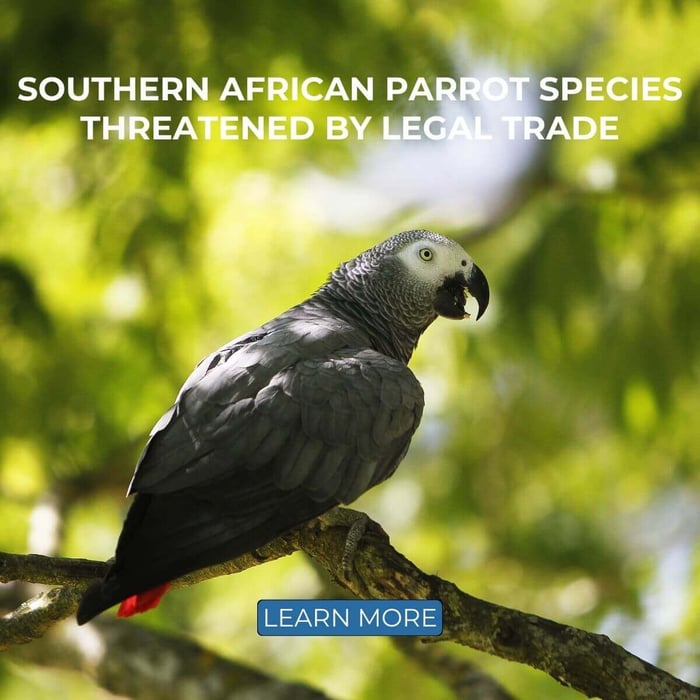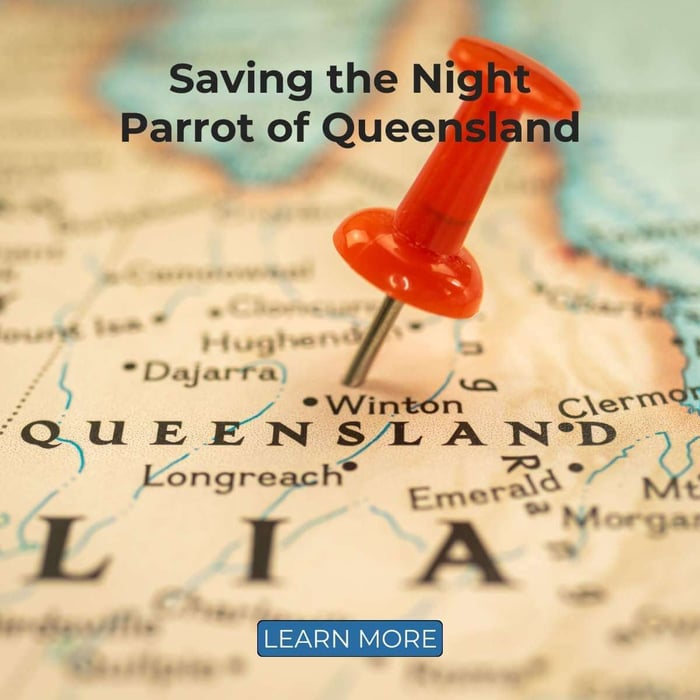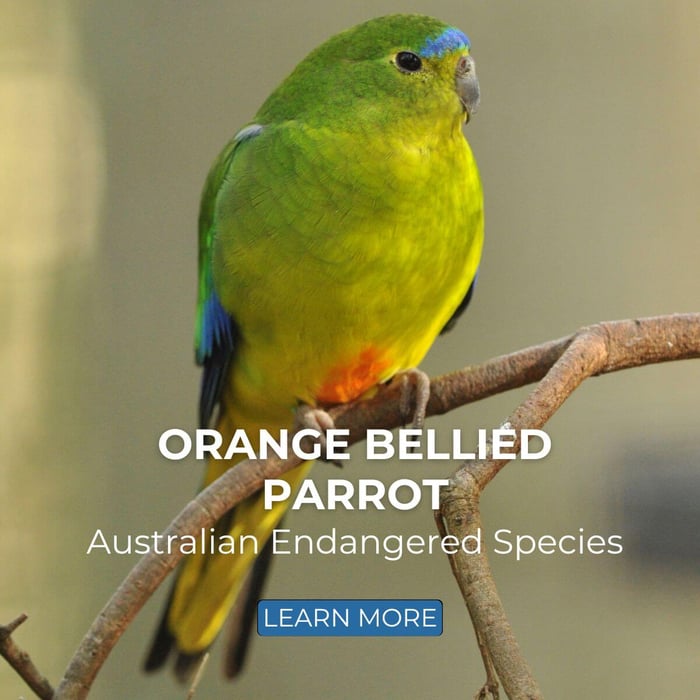Endangered Parrot Species Under Threat in Southern Africa
In a concerning development, Southern African endangered parrot species are now under significant threat due to the legal animal trade. This issue has gained attention, excluding the already serious threat of poaching. Recent reports reveal that between 2005 and 2014, approximately 18,000 protected species of wild plants and animals, valued at $340 million, were sold legally. Among these, live parrots topped the export list.
Surge in Wild Bird Trade
The trade-in wild birds has seen a dramatic increase over the past decade. In 2005, the number of wild birds traded was around 50,000. By 2014, this number had escalated to over 300,000, highlighting a significant surge in demand. This trend is particularly worrying for conservationists and wildlife protection organisations, as it indicates a growing market that could further endanger already vulnerable species.

Decline of Native Parrot Populations
Southern Africa is home to 18 native parrot species within the Southern African Development Community (SADC) region. Alarmingly, half of these species are experiencing declining populations. More concerning is that three of these species are now globally threatened. The African Grey Parrot, one of the most exported species, is at the forefront of this crisis.
The African Grey Parrot: A Vulnerable Species
The African Grey Parrot, classified as vulnerable by the International Union for Conservation of Nature (IUCN), is highly sought after as a pet in the United States, Europe, and Western Asia. The increased legal trade of these parrots has contributed to a sharp decline in their population. Rowan Martin, the director of the Africa conservation program at the World Parrot Trust, has expressed grave concerns about the level of trade in wild-sourced grey parrots.

Captive-Bred Birds Fueling Wild Parrot Trade
The exportation of captive-bred birds is increasing at an alarming rate, which in turn stimulates the demand for pet grey parrots. Many uninformed buyers end up purchasing wild-caught parrots because they are often cheaper than their captive-bred counterparts. This trend not only threatens the wild populations but also creates a deceptive market dynamic.
The Veil of Captive-Bred Parrots
A significant issue is the export of wild-caught parrots being executed under the guise of captive-bred birds. This practice not only undermines conservation efforts but also fuels illegal trade. Conservationists argue that stricter regulations and better enforcement are needed to curb this illegal practice and protect endangered parrot species. This deceptive practice makes it difficult to track the true origins of these birds, complicating conservation efforts.
Conservation Efforts and Challenges
Efforts to conserve parrot species in Southern Africa face numerous challenges. While organisations like the World Parrot Trust are actively working to raise awareness and implement conservation strategies, the rampant legal and illegal trade continues to pose a significant threat. The lack of comprehensive data and enforcement mechanisms further complicates these efforts.
Legal Framework and Enforcement
Despite international agreements like the Convention on International Trade in Endangered Species of Wild Fauna and Flora (CITES), enforcement remains weak. Many countries lack the resources or political will to implement and monitor these regulations fully. This lack of effective enforcement allows illegal activities to persist under the radar, exacerbating the decline of endangered parrot species.
Community Involvement
Engaging local communities in conservation efforts is crucial. These communities often have extensive knowledge of local wildlife and can play a vital role in monitoring and protecting parrot populations. Providing education and economic incentives for conservation can empower these communities to become active participants in the fight against illegal trade.
Global Responsibility in Parrot Trade
The global demand for parrots as pets places immense pressure on wild populations. Countries that import these birds must take responsibility and ensure that their trade practices do not contribute to the decline of endangered species. Implementing stricter import regulations and promoting awareness about the origins of these pets can help mitigate this issue.
International Cooperation
International cooperation is essential in combating the illegal parrot trade. Countries must work together to harmonise regulations and share intelligence on illegal activities. Collaborative efforts can lead to more effective enforcement and better protection for endangered species. Cross-border initiatives and joint task forces can enhance the global response to this pressing issue.
The Role of Public Awareness
Public awareness plays a crucial role in addressing the threat to endangered parrot species. Educating potential buyers about the origins of their pets and the impact of their choices on wild populations can lead to more informed decisions. Campaigns highlighting the plight of these birds can also help reduce the demand for wild-caught parrots.
Media and Education
Media campaigns and educational programs can significantly impact public perception and behaviour. By showcasing the beauty and intelligence of these birds, along with the threats they face, these initiatives can foster a sense of responsibility and urgency. Schools and universities can also incorporate conservation topics into their curricula, nurturing a new generation of environmentally conscious individuals.
The Future of Southern African Parrot Species
The future of Southern African parrot species hangs in the balance. Without immediate and effective action, these beautiful and intelligent birds face the risk of extinction. Conservationists are calling for urgent measures to regulate the trade, protect habitats, and ensure the survival of these species.
Habitat Protection
Protecting the natural habitats of parrots is vital for their survival. Deforestation and habitat destruction are significant threats that exacerbate the impact of trade. Governments and conservation organisations must work together to establish and enforce protected areas, ensuring that parrots have safe environments in which to thrive.

Research and Monitoring
Ongoing research and monitoring are essential to understanding the dynamics of parrot populations and the effectiveness of conservation strategies. Investing in scientific studies and utilising modern technology, such as satellite tracking, can provide valuable insights and guide conservation efforts. Data collection and analysis can help identify trends and inform adaptive management practices.
Conclusion: A Call to Action
The legal animal trade poses a significant threat to endangered parrot species in Southern Africa. With the number of traded wild birds skyrocketing and native parrot populations declining, immediate action is required. Conservation organisations, governments, and the public must work together to safeguard the future of these iconic birds. Only through collective efforts can we hope to prevent the extinction of Southern Africa's precious parrot species.
Individual Responsibility
Individuals can make a difference by making informed choices about pet ownership. Opting for captive-bred birds from reputable breeders and supporting conservation initiatives can contribute to the protection of wild parrot populations. Advocacy and participation in conservation programs can amplify the impact of individual actions.

Support for Conservation Organizations
Supporting organisations dedicated to parrot conservation, such as the World Parrot Trust, can provide much-needed resources for research, education, and on-the-ground conservation efforts. Donations, volunteer work, and advocacy can strengthen these organisations' ability to combat the threats facing endangered parrot species.
The plight of Southern Africa's parrot species is a stark reminder of the complex interplay between legal trade, conservation, and global responsibility. By addressing the challenges and embracing our roles as stewards of the environment, we can ensure that these magnificent birds continue to grace our world for generations to come.




